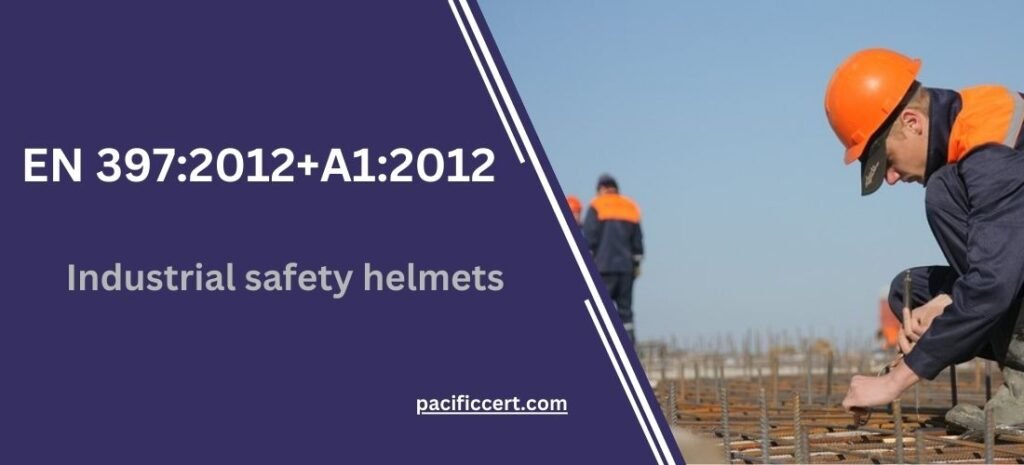
What is EN 397:2012+A1:2012 – Industrial Safety Helmets?
EN 397:2012+A1:2012 specifies the requirements and testing methods for industrial safety helmets. The standard sets out the minimum requirements for impact resistance, penetration resistance, and shock absorption for safety helmets used in a variety of industrial settings.
The standard includes requirements for the design and construction of safety helmets, as well as requirements for the materials used in their manufacture. It also specifies the requirements for testing the helmets to ensure they meet the necessary safety standards.
Some of the key points are:
- Impact resistance
- Penetration resistance
- Shock absorption
- Retention system
- Marking and instructions for use
It is an important standard for ensuring the safety of workers in industrial settings where there is a risk of head injury. Compliance with the standard can help to ensure that safety helmets provide effective protection against impact and penetration, and can help to reduce the risk of serious head injuries.
Requirements of EN 397:2012+A1:2012
Impact resistance: The helmet must be able to withstand an impact from a specified height without cracking or breaking. The helmet is tested by dropping it onto a flat surface.
Penetration resistance: The helmet must be able to resist penetration by a pointed object. The helmet is tested by subjecting it to a pointed weight dropped from a specified height.
Shock absorption: The helmet must have a certain level of shock absorption to reduce the impact of a blow to the head. Thus, The helmet is tested by dropping it onto an anvil fitted with a sensor to measure the level of shock absorption.
Retention system: The helmet must have a retention system that is designed to keep the helmet on the head during use. So, the retention system must include a chin strap and adjustment mechanisms.
Field of vision: The helmet must provide an adequate field of vision for the user.
Resistance to flame: The helmet must not be significantly affected by exposure to flames.
Resistance to impact from molten metal: The helmet must be able to withstand impacts from molten metal without cracking or breaking.
Electrical insulation: The helmet must provide a certain level of electrical insulation.
Marking: The helmet must be marked with certain information. Including the name and address of the manufacturer, the date of manufacture, and any relevant standards or specifications.
EN 397:2012+A1:2012 also includes requirements for testing the helmets to ensure they meet the necessary safety standards. Compliance with the standard can help to ensure that safety helmets provide effective protection against impact and penetration. Also, it can help to reduce the risk of serious head injuries in industrial settings.
Benefits of EN 397:2012+A1:2012
Improved safety: The standard specifies the requirements for industrial safety helmets. Including impact resistance, penetration resistance, and shock absorption, which can help to reduce the risk of head injuries in industrial settings.
Consistency: This standard provides a consistent set of requirements and testing methods for industrial safety helmets across Europe. Helping to ensure that all helmets meet the same minimum safety standards.
Quality assurance: Compliance with the standard provides assurance that the helmets have been tested and meet the necessary safety requirements. Helping to improve the overall quality of industrial safety helmets.
Reduced liability: Using industrial safety helmets that meet the requirements of EN 397:2012+A1 can help to reduce liability for employers in the event of a workplace accident, as they have taken steps to provide adequate protection for their workers.
Increased confidence: Workers can have increased confidence in the safety of their workplace when they are provided with industrial safety helmets that meet the requirements of the standard. Helping to improve overall morale and productivity.
Therefore, EN 397:2012+A1:2012 can help to improve workplace safety and reduce the risk of serious head injuries in industrial settings, benefiting both employers and employees.
Who needs EN 397:2012+A1:2012- Industrial Safety Helmets?
EN 397:2012+A1:2012 is relevant for any person or organization involved in the manufacturing, testing, supply, or use of industrial safety helmets in Europe. This includes manufacturers of industrial safety helmets, testing laboratories, and employers who provide industrial safety helmets to their workers.
Employers in particular have a responsibility to provide their workers with appropriate personal protective equipment (PPE). Including industrial safety helmets where necessary. EN 397:2012+A1:2012 specifies the requirements and testing methods for industrial safety helmets, and compliance with the standard can help employers. To ensure that they are providing their workers with effective PPE to reduce the risk of head injuries in the workplace.
Workers who are at risk of head injuries in their work, such as those working in construction, mining, or manufacturing, may also need to use industrial safety helmets that meet the requirements of this standard as part of their PPE. So, It is important for workers to understand the importance of wearing the appropriate PPE. Also, to follow the guidelines and procedures set out by their employers.
Pacific Certifications is accredited by ABIS, if you need more support with EN 397, please contact us at +91-8595603096 or support@pacificcert.com
Read About: SIST EN 14080:2013









